Install the app
How to install the app on iOS
Follow along with the video below to see how to install our site as a web app on your home screen.
Note: This feature may not be available in some browsers.
You are using an out of date browser. It may not display this or other websites correctly.
You should upgrade or use an alternative browser.
You should upgrade or use an alternative browser.
Official Protest Thread...
- Thread starter Camille
- Start date
The Greatest Negro League Team Ever? The Greatest Team Ever?
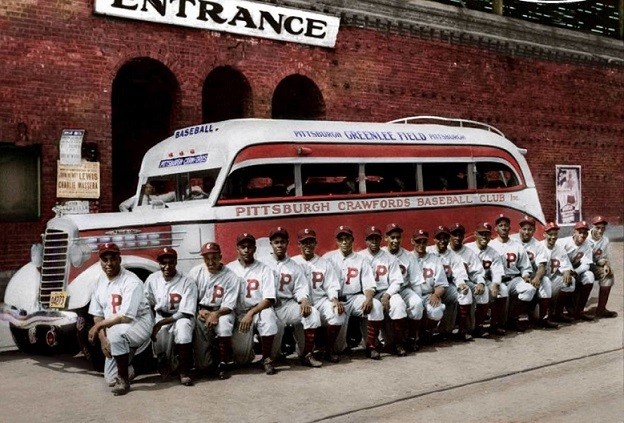
If you’re like me, you may need a short respite from politics and viruses. So, lets talk a bit of baseball, which I dearly miss. Its also an excuse to post old photographs. Photos from the 1930’s — 1940’s have always fascinated me.
African Americans have been playing baseball since the start. Post Civil War numerous amateur leagues popped up all over the country. By the early 1920’s black baseball became truly organized. A number of leagues existed form the 20’s into the ‘40’s, that were considered the highest caliber of black baseball. Most of these leagues used ‘Negro’ or ‘Colored’ in their names. Earlier, many teams included Giant in their name (Chicago Giants, Chicago Union Giants). Thus, if you saw a advertisement for an upcoming game for the Chicago Giants, you knew it was a black team.
Prior to integration black baseball was centered in the northeast (New York and Philadelphia in particular) and the upper Midwest (Chicago, Detroit) After integration most of the teams were centered in the south.
During each era, black teams reflected the same makeup as their white counterparts. There were doctors, lawyers and college men. There were men from farms, coal country and big cities. There were criminals, gamblers and hard drinking men.
What was the greatest baseball team ever? A question that fans love to debate. The answer varies from fan to fan. There are many contenders for this title. A number of Yankee teams make the list. There are some Dodger teams as well. Cardinals fans have their picks as well. You can’t forget some of those Cubs teams either. Or Philadelphia A’s or….
You can apply any number of mathematical equations and formulas to answer this question for Major League Baseball. Unfortunately, hardcore fans of the game cannot do the same for Negro League teams. Statistical records are incomplete. Schedules were erratic and a team might play 200 games a season, many of them non-league games against teams of questionable talent. Sadly, we will never have a clear picture of the black leagues. The same is true for the independent leagues that existed in the teens, 20’s and 30’s, before they were eventually swallowed up by the Majors. There were a number of leagues, usually west of the Mississippi, that played great baseball, produced great players, created regional stars and provided entertainment to many in regions that wouldn’t see Major League baseball for decades.
Therefore, we’re left with incomplete statistics, eyewitness reports and anecdotal evidence when discussing Negro League players. This makes a true analysis tricky. Veterans of the Negro Leagues, like their white counterparts, looked at their former teammates through nostalgic eyes, lionizing players that may have been good or merely average. So, it may be unwise to rely solely on the statements of former teammates.
My view on eyewitness accounts and anecdotal evidence is this: Sometimes there is simply too much evidence to ignore. When black players, white players, black managers and white managers as well as umpires praise a player’s talent, it can’t be ignored. Many of these eyewitnesses point to the 1935 Pittsburgh Crawfords as a truly great team.
The Pittsburgh Crawfords were a team organized and owned by businessman Gus Greenlee. The team was a founding member of the second incarnation of the Negro National League (1933-1938).
Greenlee was a shrewd businessman. One of the problems with black baseball as a whole was their inability, or unwillingness, to enforce contracts. Players would jump from team to team multiple times in a season if the price was right, without penalty. Teams might join a league halfway through a season. Other teams might go broke halfway through the season. Administratively, black baseball in the 20’s and 30’s was a mess. This mess did not diminish the quality of play on the diamond. However, the lack of a centralized authority that could enforce the rules allowed some owners to create talent-rich teams almost overnight. This is what Gus Greenlee did when he founded the Crawfords.
The 1935 Pittsburgh Crawfords dominated the Negro National League. The team consisted of the following:
Hall of Famer Oscar Charleston — 1B, CF
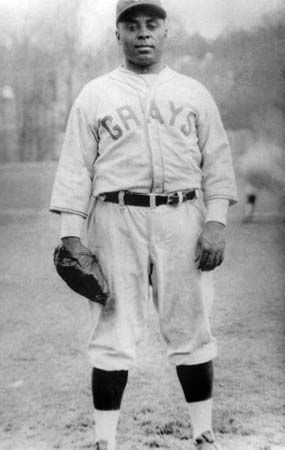
Oscar Charleston
Although past his prime by 1935, Charleston is considered by many to be the greatest Negro League player and one of the greatest players ever. I have written about Charleston previously so I won’t repeat that in full, but a sample:
If that wasn’t enough, the catcher for the ‘35 Crawfords was probably the best-known name from black baseball:
Josh Gibson — C
This Hall of Fame catcher was best known for his legendary homerun power. His defensive skills are debated but he had a powerful arm. Gibson was twenty-four in 1935 so unlike Charleston, Gibson was in his prime.
Gibson would be like having Babe Ruth as your catcher. The average probably wasn’t quite as high as Ruth’s and the on-base percentage was not as high, but Gibson was one of the biggest offensive threats in baseball, black or white.
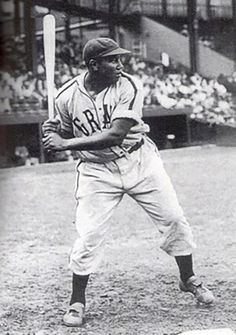
Josh Gibson
James “Cool Papa” Bell — CF
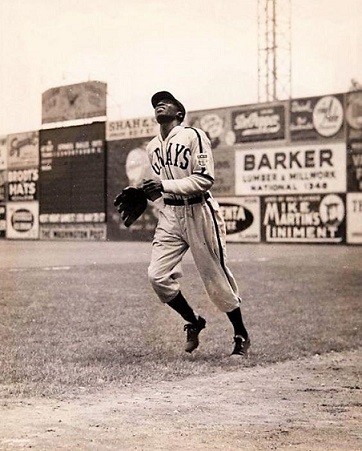
Cool Papa Bell
Bell was the speed merchant of the league. If Gibson’s power was legendary, Bell was considered the fastest player in the league for more than a decade. His defense was solid, not extraordinary. He played a shallow centerfield which allowed him to prevent many bloop singles while being fast enough to get to the deeper hits. Bell also had some pop in his bat and hit for a high average. Probably a lot like Willie McGee without the brilliant defense, or Rickey Henderson. Bell is another Hall of Famer. They used to say that Bell was so fast that he could flip the light switch and be in bed before the room got dark.
James “Judy” Johnson — 3B
Johnson was a slick fielding, light hitting third baseman in an era where third base was more of a defensive position. He hit for a good average, had good speed, could bunt, hit behind the runner or coax a walk. A classic number 2 hitter. A smart, friendly player and a Hall of Fame inductee. Probably had the same skills as Willie Randolph or Tommy Herr. Known as a gentleman and a class act.
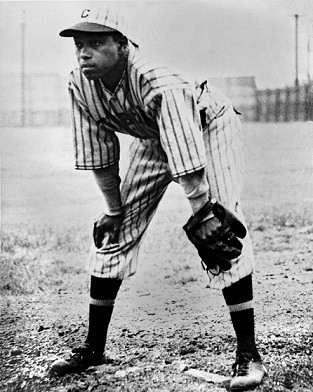
Judy Johnson
John “Jimmy” Crutchfield — OF
Crutchfield was a short, slim outfielder that could play any outfield position. He hit for a good average and was a good fielder. Crutchfield was basically a singles hitter. Probably like a Brett Butler type player, Perhaps Mickey Rivers with a better arm. Crutchfield gave many interviews after his career was over and helped to preserve much of the history of the league.
Sam Bankhead — LF
An all-around five-tool player with one of the strongest arms in the league. Bankhead hit with moderate power, could swipe a few bases and was an outstanding defensive player. When Josh Gibson died at a young age Bankhead became a surrogate father to his son, Joshua Jr. Bankhead was shot dead during an argument with a “friend.” The description of his skills remind me of Montreal Expos era Andre Dawson.
Leroy Matlock — LHP
One of the better lefties of the decade. Matlock was known for having a good fastball, slider, curve, screwball and changeup. Also known as a good hitting pitcher with some speed on the base paths.
Sam Streeter — LHP
Another southpaw. Streeter was past his prime by the time he came to Pittsburgh. He had been one of the best pitchers of the ‘20’s. Still, he was an effective and crafty veteran. Known to throw a spitball from time to time.
What Could Have Been
Two players jumped from the Crawfords before the 1935 season began. If they had remained with the team I could be convinced that the 1935 Crawford’s were one of the top five teams of all time, black or white. Maybe the best single-season team ever.
Rap Dixon — RF
Another five tool player. Dixon, I imagine, would be a Dave Winfield type. He hit for power, had speed, hit for average, had a great glove and the best throwing arm of the decade. Legend has it that Dixon once threw a ball from home plate over the right field fence in Yankee Stadium during an exhibition game.
Satchel Paige — RHP
The pitcher of the Negro Leagues. Period. The standard against which other pitchers were judged. ‘Nuff said.
Ah, what might have been.
I would post their existing stats but they are so incomplete (cobbled together through whatever box scores that could be found) as to be useless.
Despite the lack of statistical records there are a number of very good books on this area of the game. Too many to list. Only the Ball was White, The Biographical Encyclopedia of Negro League Baseball and Shades of Glory are just three of those books that I recommend. All available through Amazon.
There were two main differences between the MLB teams of the era and the Negro League teams of the era.
Major League Baseball teams had larger rosters. This gave them a much stronger bench. If a key player on a black team was injured, it would hurt them team more than if a key player on, say the Yankees, went down.
Since Negro League teams had smaller rosters, their players were more versatile. Many players could play two or three positions and play them well.
The historical consensus is that when white teams met black teams in exhibition play (and they often did), it was a coin-toss. Black all-star teams had a .500 record against white all-star teams.
What I’d give to see just one game with these players. I’ve looked for film footage but have come up empty for the 20’s and 30’s. If you know of any video of these leagues from that era, let me know.
This content was created by a Daily Kos Community member.
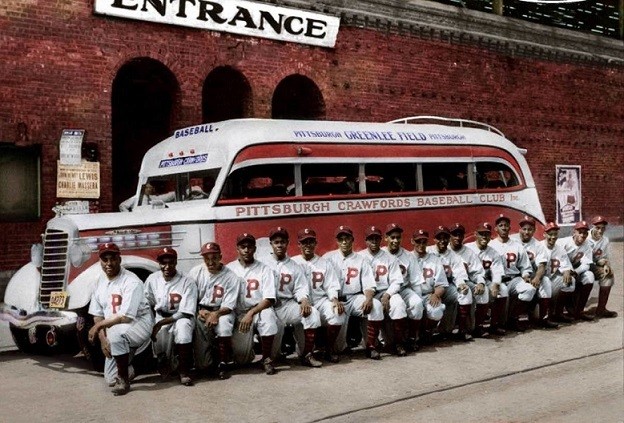

If you’re like me, you may need a short respite from politics and viruses. So, lets talk a bit of baseball, which I dearly miss. Its also an excuse to post old photographs. Photos from the 1930’s — 1940’s have always fascinated me.
African Americans have been playing baseball since the start. Post Civil War numerous amateur leagues popped up all over the country. By the early 1920’s black baseball became truly organized. A number of leagues existed form the 20’s into the ‘40’s, that were considered the highest caliber of black baseball. Most of these leagues used ‘Negro’ or ‘Colored’ in their names. Earlier, many teams included Giant in their name (Chicago Giants, Chicago Union Giants). Thus, if you saw a advertisement for an upcoming game for the Chicago Giants, you knew it was a black team.
Prior to integration black baseball was centered in the northeast (New York and Philadelphia in particular) and the upper Midwest (Chicago, Detroit) After integration most of the teams were centered in the south.
During each era, black teams reflected the same makeup as their white counterparts. There were doctors, lawyers and college men. There were men from farms, coal country and big cities. There were criminals, gamblers and hard drinking men.
What was the greatest baseball team ever? A question that fans love to debate. The answer varies from fan to fan. There are many contenders for this title. A number of Yankee teams make the list. There are some Dodger teams as well. Cardinals fans have their picks as well. You can’t forget some of those Cubs teams either. Or Philadelphia A’s or….
You can apply any number of mathematical equations and formulas to answer this question for Major League Baseball. Unfortunately, hardcore fans of the game cannot do the same for Negro League teams. Statistical records are incomplete. Schedules were erratic and a team might play 200 games a season, many of them non-league games against teams of questionable talent. Sadly, we will never have a clear picture of the black leagues. The same is true for the independent leagues that existed in the teens, 20’s and 30’s, before they were eventually swallowed up by the Majors. There were a number of leagues, usually west of the Mississippi, that played great baseball, produced great players, created regional stars and provided entertainment to many in regions that wouldn’t see Major League baseball for decades.
Therefore, we’re left with incomplete statistics, eyewitness reports and anecdotal evidence when discussing Negro League players. This makes a true analysis tricky. Veterans of the Negro Leagues, like their white counterparts, looked at their former teammates through nostalgic eyes, lionizing players that may have been good or merely average. So, it may be unwise to rely solely on the statements of former teammates.
My view on eyewitness accounts and anecdotal evidence is this: Sometimes there is simply too much evidence to ignore. When black players, white players, black managers and white managers as well as umpires praise a player’s talent, it can’t be ignored. Many of these eyewitnesses point to the 1935 Pittsburgh Crawfords as a truly great team.
The Pittsburgh Crawfords were a team organized and owned by businessman Gus Greenlee. The team was a founding member of the second incarnation of the Negro National League (1933-1938).
Greenlee was a shrewd businessman. One of the problems with black baseball as a whole was their inability, or unwillingness, to enforce contracts. Players would jump from team to team multiple times in a season if the price was right, without penalty. Teams might join a league halfway through a season. Other teams might go broke halfway through the season. Administratively, black baseball in the 20’s and 30’s was a mess. This mess did not diminish the quality of play on the diamond. However, the lack of a centralized authority that could enforce the rules allowed some owners to create talent-rich teams almost overnight. This is what Gus Greenlee did when he founded the Crawfords.
The 1935 Pittsburgh Crawfords dominated the Negro National League. The team consisted of the following:
Hall of Famer Oscar Charleston — 1B, CF

Oscar Charleston
Although past his prime by 1935, Charleston is considered by many to be the greatest Negro League player and one of the greatest players ever. I have written about Charleston previously so I won’t repeat that in full, but a sample:
I think Charleston, in 1935, would be similar to Mike Trout just past his prime. Not at his peak but a formidable threat. Charleston was a smart and fierce competitor and was the team’s player-manager.Buck O’Neil, a former Negro League player, thought that Willie Mays was the best major league player but that Charleston was better. O’Neil describes Charleston as a combination of Ty Cobb, Babe Ruth and Tris Speaker. That is, Cobb’s speed, Ruth’s power and Speaker’s defense.
Bernie Brogan, a longtime St. Louis Cardinals scout, thought Charleston was the best he had ever seen.
Cuban pitcher Jaunelo Mirabal played against Cobb and Charleston and said they were about equal.
According to the Sporting News, the famous New York Giants player and manager, John McGraw, called Charleston the best he had ever seen.
Hall of Fame umpire, Jocko Conlon said of Charleston, “He was The Great Negro League player of his time, a beautiful player.”
Other white, black, Cuban and Mexican players attested to Charleston’s brilliance as a player.
The Sporting News rates him in the top 100 of all time.
Bill James rates him in the top 10 of all time.
If that wasn’t enough, the catcher for the ‘35 Crawfords was probably the best-known name from black baseball:
Josh Gibson — C
This Hall of Fame catcher was best known for his legendary homerun power. His defensive skills are debated but he had a powerful arm. Gibson was twenty-four in 1935 so unlike Charleston, Gibson was in his prime.
Gibson would be like having Babe Ruth as your catcher. The average probably wasn’t quite as high as Ruth’s and the on-base percentage was not as high, but Gibson was one of the biggest offensive threats in baseball, black or white.

Josh Gibson
James “Cool Papa” Bell — CF

Cool Papa Bell
Bell was the speed merchant of the league. If Gibson’s power was legendary, Bell was considered the fastest player in the league for more than a decade. His defense was solid, not extraordinary. He played a shallow centerfield which allowed him to prevent many bloop singles while being fast enough to get to the deeper hits. Bell also had some pop in his bat and hit for a high average. Probably a lot like Willie McGee without the brilliant defense, or Rickey Henderson. Bell is another Hall of Famer. They used to say that Bell was so fast that he could flip the light switch and be in bed before the room got dark.
James “Judy” Johnson — 3B
Johnson was a slick fielding, light hitting third baseman in an era where third base was more of a defensive position. He hit for a good average, had good speed, could bunt, hit behind the runner or coax a walk. A classic number 2 hitter. A smart, friendly player and a Hall of Fame inductee. Probably had the same skills as Willie Randolph or Tommy Herr. Known as a gentleman and a class act.

Judy Johnson
John “Jimmy” Crutchfield — OF
Crutchfield was a short, slim outfielder that could play any outfield position. He hit for a good average and was a good fielder. Crutchfield was basically a singles hitter. Probably like a Brett Butler type player, Perhaps Mickey Rivers with a better arm. Crutchfield gave many interviews after his career was over and helped to preserve much of the history of the league.
Sam Bankhead — LF
An all-around five-tool player with one of the strongest arms in the league. Bankhead hit with moderate power, could swipe a few bases and was an outstanding defensive player. When Josh Gibson died at a young age Bankhead became a surrogate father to his son, Joshua Jr. Bankhead was shot dead during an argument with a “friend.” The description of his skills remind me of Montreal Expos era Andre Dawson.
Leroy Matlock — LHP
One of the better lefties of the decade. Matlock was known for having a good fastball, slider, curve, screwball and changeup. Also known as a good hitting pitcher with some speed on the base paths.
Sam Streeter — LHP
Another southpaw. Streeter was past his prime by the time he came to Pittsburgh. He had been one of the best pitchers of the ‘20’s. Still, he was an effective and crafty veteran. Known to throw a spitball from time to time.
What Could Have Been
Two players jumped from the Crawfords before the 1935 season began. If they had remained with the team I could be convinced that the 1935 Crawford’s were one of the top five teams of all time, black or white. Maybe the best single-season team ever.
Rap Dixon — RF
Another five tool player. Dixon, I imagine, would be a Dave Winfield type. He hit for power, had speed, hit for average, had a great glove and the best throwing arm of the decade. Legend has it that Dixon once threw a ball from home plate over the right field fence in Yankee Stadium during an exhibition game.
Satchel Paige — RHP
The pitcher of the Negro Leagues. Period. The standard against which other pitchers were judged. ‘Nuff said.
Ah, what might have been.
I would post their existing stats but they are so incomplete (cobbled together through whatever box scores that could be found) as to be useless.
Despite the lack of statistical records there are a number of very good books on this area of the game. Too many to list. Only the Ball was White, The Biographical Encyclopedia of Negro League Baseball and Shades of Glory are just three of those books that I recommend. All available through Amazon.
There were two main differences between the MLB teams of the era and the Negro League teams of the era.
Major League Baseball teams had larger rosters. This gave them a much stronger bench. If a key player on a black team was injured, it would hurt them team more than if a key player on, say the Yankees, went down.
Since Negro League teams had smaller rosters, their players were more versatile. Many players could play two or three positions and play them well.
The historical consensus is that when white teams met black teams in exhibition play (and they often did), it was a coin-toss. Black all-star teams had a .500 record against white all-star teams.
What I’d give to see just one game with these players. I’ve looked for film footage but have come up empty for the 20’s and 30’s. If you know of any video of these leagues from that era, let me know.
This content was created by a Daily Kos Community member.

The Greatest Negro League Team Ever? The Greatest Team Ever?
If you’re like me, you may need a short respite from politics and viruses. So, lets talk a bit of baseball, which I dearly miss. Its also an excuse to post old photographs. Photos from the 1930’s — 1940’s have always fascinated me. African Americans...
www.dailykos.com
where are the protests?
The Budgetnista
Yesterday at 9:57 PM ·

8 FREE, RIGHT-ON-TIME MONEY/HEALTH CLASSES!
8 FREE, RIGHT-ON-TIME MONEY/HEALTH CLASSES!
Get Instant Access at >>> www.BudgetnistaCrisisClasses.com
-
THE CLASSES:
.
1.How to Budget and Save During an Economic Downturn
.
2. How to Buy Stocks in Uncertain Times.
.
3. How to Make Money From Home
.
4. How to Manage your Mental Wellness and Money During a Crisis
.
5. How to Land Your Dream Job When "No One" is Hiring
.
6.How to Master Your Mind & Manifest Abundance During Times of Uncertainty
.
7. How to Boost Your Immune System on a Budget
.
8. Negotiate Your Way to Lower Bills, Interest Rates & More Savings
---
Over 100,000 Dream Catchers were able to catch the series when it was live...
---
And now, I made it 100% possible for ALL of our 1 million Dream Catchers to have forever-access to grab the valuable info we soaked up.
---
Get INSTANT Access here: www.BudgetnistaCrisisClasses.com
Yesterday at 9:57 PM ·

8 FREE, RIGHT-ON-TIME MONEY/HEALTH CLASSES!
8 FREE, RIGHT-ON-TIME MONEY/HEALTH CLASSES!
Get Instant Access at >>> www.BudgetnistaCrisisClasses.com
-
THE CLASSES:
.
1.How to Budget and Save During an Economic Downturn
.
2. How to Buy Stocks in Uncertain Times.
.
3. How to Make Money From Home
.
4. How to Manage your Mental Wellness and Money During a Crisis
.
5. How to Land Your Dream Job When "No One" is Hiring
.
6.How to Master Your Mind & Manifest Abundance During Times of Uncertainty
.
7. How to Boost Your Immune System on a Budget
.
8. Negotiate Your Way to Lower Bills, Interest Rates & More Savings
---
Over 100,000 Dream Catchers were able to catch the series when it was live...
---
And now, I made it 100% possible for ALL of our 1 million Dream Catchers to have forever-access to grab the valuable info we soaked up.
---
Get INSTANT Access here: www.BudgetnistaCrisisClasses.com
Similar threads
- Replies
- 100
- Views
- 1K
- Replies
- 1
- Views
- 68
- Replies
- 3
- Views
- 155
- Replies
- 26K
- Views
- 175K

